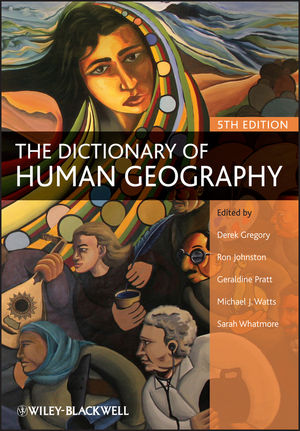|
Textbook
The Dictionary of Human Geography, 5th EditionISBN: 978-1-4051-3288-6
Paperback
1072 pages
June 2009, ©2009, Wiley-Blackwell
 This is a Print-on-Demand title. It will be printed specifically to fill your order. Please allow an additional 10-15 days delivery time. The book is not returnable.
Other Available Formats: Hardcover
|
||||||
Comprehensively revised to reflect the changing nature and practice
of human geography and its rapidly developing connections with
other fields.
- Entries from many new contributors at the forefront of developments in the field
- Addresses human geography's relation to the discipline at large (geography, physical geography, and biogeography) and the dialogue between human geography and the humanities and social sciences (international relations, literature, philosophy, social theory)
- Traces the conceptual and cultural formation of major world regions: Africa; Americas; Asia; Australasia; Europe; Latin America; the Middle East; and the Global South
- Expands the coverage of vital geo-political and geo-economic issues including American Empire, Asylum, Ethnic Cleansing, Cold War, Genocide, Human Rights, International Monetary Fund, Just War, Narco-Capitalism, Terrorism, Petro-Capitalism, Urbicide, War, World Social Forum
- Strengthens human geography's involvement in ecological and environmental issues , including biodiversity, bio security, climate, global warming, sustainability, tropicality, urban nature, and water
- Incorporates the latest theoretical developments across the field of the humanities and social sciences: affect; complexity theory; non-representational theory; post humanism; and spaces of exception
- review the latest methodological developments (digital cartography, geographical information science, methodology, software for quantitative and qualitative analysis, visual methods)
For the first time, a consolidated bibliography is included at the end of the Dictionary rather than scattered across individual entries - an invaluable resource in its own right for anyone conducting a bibliographic search - and this, together with the detailed index and the systematic cross-referencing of headwords, provides a crucial second architecture for the primary, alphabetical ordering of the Dictionary.



